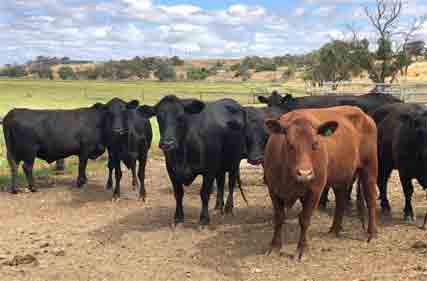 Meat & Livestock Australia (MLA) has published new analysis of the broader market conditions and economic contribution of the red meat industry in the latest State of the Industry report.
Meat & Livestock Australia (MLA) has published new analysis of the broader market conditions and economic contribution of the red meat industry in the latest State of the Industry report.
The report produced by MLA provides an overview of Australia’s red meat and livestock industry from the prior calendar year. This edition examines financial year 2021-2022 and calendar year 2022.
According to MLA’s Managing Director Jason Strong, even though conditions have changed since 2022, the report demonstrates the strength of the industry.
“With a larger cattle herd and sheep flock turn off has increased and increased the volume of livestock processed this Spring. More product availability had driven significant demand for red meat at the shops.”
“Exports also significantly rose in the past year, with Australia rising to be the world’s largest sheepmeat and goatmeat exporter, demonstrating the popularity of Australian red meat right around the world.”
“Australian livestock production is among the most efficient systems in the world, which leaves the industry well positioned to respond to challenges such as volatile weather conditions for the next several years,” Mr Strong said.
Industry turnover
In 2021–22, Australia’s red meat and livestock industry turnover was $75.4 billion, or around 1.7% of Australia’s total key industry turnover. This is 7.7% higher than revised 2020–21 figures and an increase of 10.7% on 2017–18 figures.
New South Wales (28%), Victoria (24%) and Queensland (21%), represent the majority of turnover within the industry, with Western Australia (13.7%), South Australia (8.5%), Tasmania (3%) and the Northern Territory (1%) rounding out the remaining turnover.
Minister for Agriculture, Fisheries and Forestry, Senator the Hon Murray Watt said that this report showcased the efficiency of Australia’s livestock production systems.
“The industry has faced a number of challenges over the last 12 months, but this report shows that consumers in Australia and around the world continue to place very high value on Australian red meat,” Minister Watt said.
“The efforts of government and industry to open new markets overseas have been rewarded and will remain important as producers face the challenge of drought and volatile livestock prices.
“The report also highlights that the sector is vital economic activity, being worth $75.4 billion in 2021-22 and employing over 433,000 people.”
Exports
Red meat and livestock export value rose 17% year-on-year to total $17.6 billion in 2021–22 which is 3.3% of Australia’s key industry exports.
In calendar year 2022, Australia was the world’s largest sheepmeat and goatmeat exporter, as well as the fourth largest beef and bovine meat exporter after Brazil, India and the United States.
In 2022, Australian beef exports totalled 855,000 tonnes shipped weight (swt), down 4% year-on-year. Japan remained Australia’s largest beef export market (in volume terms) in 2022, totalling 214,000 tonnes.
Australian lamb exports totalled 284,257 tonnes swt which was the highest on record and 7% above 2021. The United States remained Australia’s largest lamb export destination in 2022 in volume terms, at 75,452 tonnes. While mutton exports totalled 144,005 tonnes, a 2% year-on-year increase which China remaining steady as the number one market at 57,246 tonnes.
Goatmeat exports totalled 21,831 tonnes swt in 2022, up 15% on the year prior. The United States remains the largest destination for goatmeat, accounting for 57% of exports or 12,505 tonnes in 2022.
Live cattle exports totalled 600,084 head in 2022, down 22% from 2021, with Indonesia remaining as the largest market for live cattle, receiving 56% of all cattle leaving Australia.
In 2022, Australian live sheep exports totalled 502,758 head, down 13% on the previous year. Kuwait remained Australia’s largest destination for live sheep exports in 2022, accounting for 58% of exports, followed by Israel at 14%.
Domestic consumption
Australia’s per capita beef and sheepmeat consumption continues to be one of the largest in the world.
Australian per capita consumption of beef was approximately 23.7kg in 2022, while the global average is 6.3kg.
Australian consumption of sheepmeat was approximately 6.8kg in 2022, while the global average is 1.8kg. While 2022 saw lamb consumption dip slightly, there has been an uplift in consumption in late 2022 and early 2023.
“Australians love their red meat, and the latest State of the Industry report supports that as we are some of the biggest per capita consumers of beef and lamb,” Mr Strong said.
“Throughout 2023 we have seen both saleyard and retail prices fall as supply increases, this is leading to a production boom as we approach the end of this year.”
“The sales performance of Australian lamb and beef in the domestic market is very strong, with both proteins growing in sales volume and overall value. When comparing the last quarter with the same period in 2022, value growth for beef is 1.8% and for lamb is 4.2%.
“Now is the perfect opportunity for Australian consumers to put some red meat in their trolley and enjoy the best our industry has to offer.”
https://www.mla.com.au/news-and-events/industry-news/australias-robust-red-meat-and-livestock-industry-well-positioned-in-the-face-of-volatile-climate-cycle/
